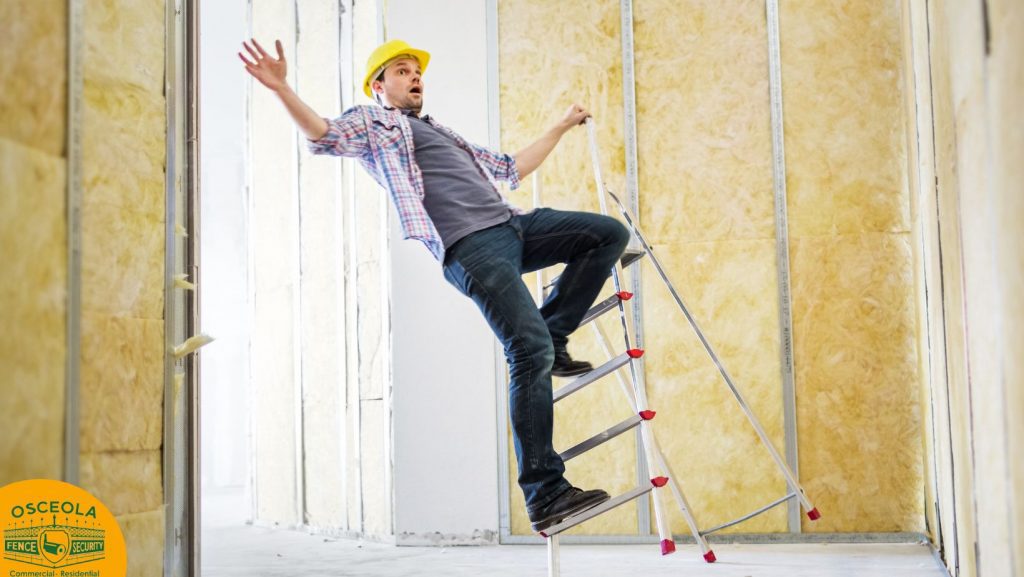What Are The OSHA Requirements For Hand Or Stair Rails?
To begin with, hand and stair rails are critical safety features in any building, whether it’s an urban or commercial buildings. They are vital for preventing falls and guarding the safety of occupants, especially those with mobility issues. The Occupational Safety and Health Administration (OSHA), has special demands for the design and placing, of hand and stair rails. So, in this post, we will discuss the OSHA requirements for hand or stair rails, and also the effect of iron railings for stair and balcony railing installation.
If you find this post relevant, we also suggest the following readings:
Contact Us And Secure Your Business For Sure!
Contact the Best fence company Chicago, Manufacturers since 1975 of iron balcony railings Chicago, and wrought iron balconies Chicago
Cause of Accidents In Construction According to The OSHA
Did you know that falls are the main cause of construction accidents? So, trips, slips and falls on ladders can cause many injuries and accidents among workers. Hence, the use of guard rails can largely prevent many accidents, and specially in construction sector.
What types of protection are there?
There are several types of protection; For instance, for employees who are exposed to falling 6ft or more from an unsafe side or edge. The owner must select a guardrail system, safety net system, warning lines, and/or personal fall arrest warning lines to protect the worker.
On the other hand, when it comes to guard rail system, Osceola Fence Company, specialize in iron railings and railing installation in Chicago. We also know, the importance of hand and stair rails for the safety of users, which is why we can provide a balcony railing installation and also, other railing solutions that meet OSHA demands.


Ask for Free Quotes! And for a custom design
Chicago Fence Company, built according to standards for custom iron balcony railings Chicago and wrought iron staircases Chicago


How And When To Use A Handrail?
Firstly, OSHA requirements, for hand and stair rails, depend on the type of building and the purpose of the railings. For instance, OSHA requires that handrails be installed on any stairway with four or more risers, and also they must be between 30 and 38 inches in height.
On the other hand, stair rails must be at least 42 inches in height and have a clearance of at least 30 inches from the edge of the stair tread to the top of the rail. Also, hand and stair rails must be able to support a minimum of 200 pounds of weight.
So, with these bounds, Osceola Fence Company relies on to build trendy ideas such as Balcony, railings, stair rail, etc.
Ideas For Installing Handrails Or Railings
Without doubt, Wrought iron balconies, are a distinctly trendy choice. Since, wrought iron is a sturdy and long-lasting material, plus, it can withstand harsh weather conditions and resist corrosion. Also, wrought iron offer a timeless and elegant look that can add style and value to any building.
Hence, it can be applied for condominiums, warehouses, even companies that need railings, so its installation works very well for both urban and commercial sectors.
Increase the security of your property
Experts in iron railings Chicago, customize your order and give you the best balcony railing installation Chicago. Plus, a fire escape installation Chicago
What another OSHA Requirement For Hand Or Stair Rails you need to know?
Another OSHA demands for handrail you need to know, is that hand and stair rails are critical safety features, and on this occasion they must be designed and installed well. For example, our iron railings Chicago, are a great choice for balcony and stair railing installation due to their endurance, strength, and also aesthetic appeal.
Lastly, at Osceola Fence, we offer a range of iron railing solutions, counting our Chicago custom wrought iron balcony railing. Contact us today and ask for a FREE QUOTE and learn more about our railing installation Chicago and also how we can help you meet your safety and design needs. Plus, our team of iron balcony railing contractors Chicago has skills and knowledge to design and install hand and stair rails that meet all OSHA demands while also fulfill your property’s aesthetic.




